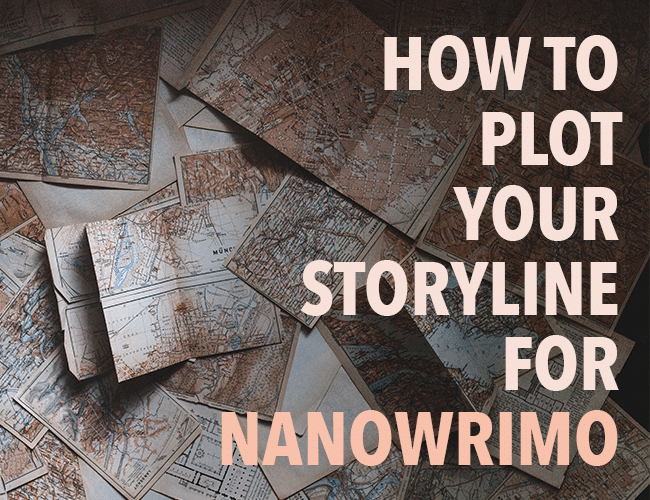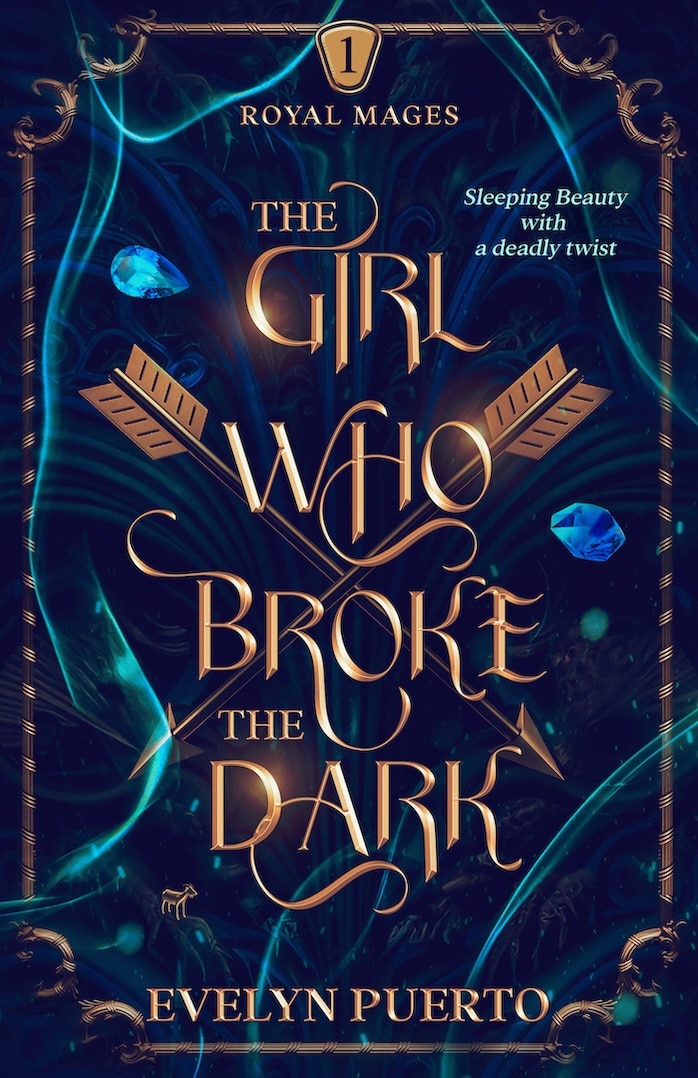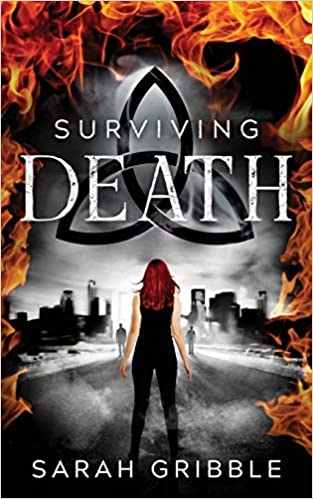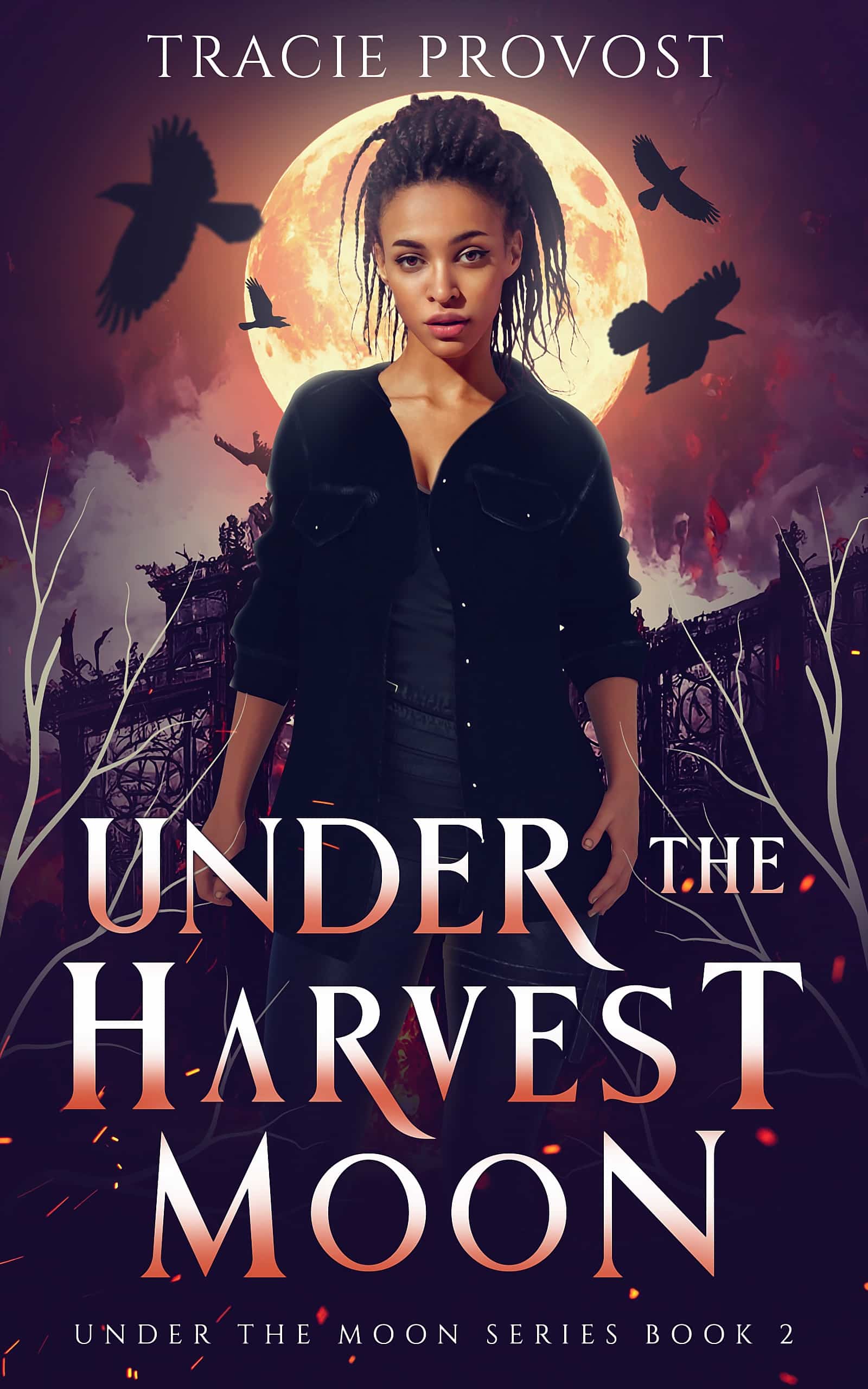The first time I took up the NaNoWriMo challenge, I lost my first two days staring at a blank scene. I’d write a paragraph and then delete it. I’d get a couple sentences into a chapter and then change my mind.

My writing was a disappointing mess.
By the third day, I was already so far behind my goal, I realized I was never going to catch up. I stuck it out for two more weeks, but then, discouraged and frustrated, I quit.
Stuck? Build a Storyline
The second time I tried the NaNoWriMo challenge, my experience was different.
I came to the first day prepared with a storyline to write to. Having a rough outline of where the story was going made a major difference.
By the end of the first week the words were flowing and I was far ahead of my word count. By the end of month I had finished the first draft of my novel, Mencken and the Monsters.
Building a storyline can be a daunting endeavor. It can be hard to know where to start and how much to include.
Whether I’m working on a short story or a book, when I’m at a loss for a storyline, I just steal one. From Grimms' Fairy Tales to Greek mythology to the Bible, there are thousands of amazing storylines found in ancient texts, waiting to be repurposed.
Movements of a Story
A story, like a symphony, has movements. These are sections of the story that focus on a particular part of the characters’ journeys.
When I start a story, I don’t know every sentence or every scene. There is a lot of discovery I do in the process of writing, but I do know the general direction the story is going to go because I have the moments laid out.
Having the moves of the narrative sketched out ahead of time is like using a GPS when we drive. The different moves serve as sign posts that let us know where to go.
To repurpose the movements of an ancient story, I think through the story, making a note each time there is a major change in the direction of narrative. Removing the individual characters and setting, I try to summarize what is happening in the story with a short paragraph. This provides for me a skeleton to hang my setting and characters on.
Sample Storyline: Jacob and Esau
One my favorite ancient stories comes from the book of Genesis. It is the story of the waring brothers Jacob and Esau.
This storyline pits brother against brother in a struggle for power and ownership of the family. It begins with opposite siblings: one is strong, handsome, athletic, and loved, while the other is smart, cunning, and ambitious.
I see the story unfolding in seven major moments:
Movement One
Early in the story, the tone is set when the cunning brother tricks the strong one into giving something important away. It’s revealed in the story that the big lug is impetuous and spoiled, while the cunning brother has already begun to play the game of power.
In the book of Genesis, the older and physically superior brother, Esau, trades the right to be considered the firstborn son to Jacob, his younger and more cunning brother, for a bowl of stew.
Movement Two
This time the smarter brother becomes more aggressive. Instead of trying to trick his brother into giving him what he wants, he steals it. The smart brother takes something from the athletic brother that no amount of physical strength can reclaim.
There is opportunity to write dynamic heartbreak in this scene as the stronger brother comes to understand and grieve what he has lost.
In the biblical story, this happens with Jacob pretends to be Esau and steals their father’s blessing.
Movement Three
Having lost something incredibly valuable, the more athletic brother is infuriated. He does the only thing he knows he can: he threatens the more cunning brother with physical violence and chases the smarter brother away.
There is an opportunity here for a fantastic packing scene as the brother whose life is being threatened packs his bag in a rush, knowing the brother he stole from will be there to kill him any second.
In the story in Genesis, Jacob is told by his mother to go and live with her brother before Esau finds out what he has done and comes to kill him.
Movement Four
As the cunning brother runs, he has a moment of personal crisis. He pauses and takes in everything that is happening. Even though he’s won the family power games, he is the one on the run.
Here you have the chance to have your character pause and take stake of his life. Maybe he promises that when he gets where he is going, he will be different. He won’t trick or steal. He will start again.
In Genesis Jacob falls asleep alone in the desert and dreams of a giant staircase going toward heaven.
Movement Five
The cunning brother escapes to a new place where he meets new people. He immediately experience prosperity. It looks like everything is going to work out for the smart but thieving brother.
Then, someone in the new world bests him.
The cunning brother is deceived and loses at his own game. In the processes, he is changed. He see what it is like and learns from the experience.
In Genesis, Jacob's uncle Laban defeats him, tricking him into marrying the wrong girl and in the process doubling the time Jacob has to work for him.
Movement Six
Now a different man, the younger brother realizes he must face what he’s done, so he travels home to find his brother and make amends. On the journey, he has a second moment of pause when he takes everything in.
He has a fear-filled revelation that, while he has changed, his stronger and more powerful brother might not have. The cunning brother realizes he may be walking into his own death.
This moment gives us the opportunity to write a scene where the cunning brother wrestles with his decision. Was coming home the right idea? We can create incredible tension for the reader as they wait on the edge of their seat to see what will happen next.
In Genesis, this is where Jacob wrestles with a mysterious figure.
Movement Seven
Finally, in the grand finale, the brothers meet again. Has the stronger brother changed too? Will he forgive the past? Has he moved on from his anger?
Or will the brothers finally fight face-to-face? Will the more cunning brother get what was coming to him?
There are countless possible endings to the tale.
In Genesis, Esau has changed. He has a large family of his own and has found great personal success. He forgives his brother and they continue on as neighbors.
Put a Storyline to Use
If I were going to use this storyline for NaNoWriMo, I’d first decide who my brothers are and what they are like. What does the stronger brother have that the smarter brother wants? Is it a birthright? Is it a girlfriend? Is it popularity in high school or a fantastic job at a law firm?
Once I built my characters, I’d write the first movement and then slowly work the story to the end.
Often the story will surprise me and change course in the middle. I love it when that happens.
The original movement structure is just a way to get started. If it goes a different way in the writing, that’s fine. Follow it.
Have you ever drawn from an age-old storyline to write something fresh and new? Let me know in the comments.
PRACTICE
For practice this week, help out your fellow writers who may need some movements for their stories. Pick an ancient story and take fifteen minutes to break down the movements of the narrative in the comments. Remove the individual characters and setting, and summarize for us the different steps in the story.
When you're done, share your storyline in the comments below, and be sure to leave feedback for your fellow writers!
Jeff Elkins is a writer who lives Baltimore with his wife and five kids. If you enjoy his writing, he'd be honored if you would subscribe to his free monthly newsletter. All subscribers receive a free copy of Jeff's urban fantasy novella "The Window Washing Boy."



Great post. I had to laugh because my first experience with NaNoWriMo was practically identical to yours. Planning ahead on the second and third attempts made them both successful. But that first try…lol.
Thank you for the article.
Jeff,
What a powerful advice. Writing fiction is my hobby and I know how many stories I’ve started that just dies down after the intro. I really appreciate that you share with us your own example, it helps me see how outlining works.
I was always under the impression that as an artist, you have to improvise but looks like it’s not the case at all. I guess it all depends on the person and what works best for them. 🙂
Thanks for sharing!
Cheers,
Anh
Hey Anh,
I would recommend containing your improvisation to your strength. If you are a natural story teller, than improvising the plot line may work for you. I am not a natural story teller so I have to have my plot planned and ready to go before I start writing. I’m pretty good at dialog though so I try not to plan out conversations. I let them flow from the plot. Often in the process of writing them I will discover new things about my characters or my story. I would recommend finding your strength, improvising there, and put planning around everything else before you start writing.
Hope that helps!
Jeff
Thanks for this week’s article. By using a Biblical story to teach us how to create a new one by the simple steps you’ve given, is absolute genius.
I am a natural story teller, but I will use your steps to write a children’s book when I finish NaNO.
I love trying out new means to do something I enjoy doing.
• Protagonist has a maguffin to deliver to Character A at Destination.
• En route, Protagonist encounters Antagonist. Antagonist discovers Protagonist’s mission and Destination without Protagonist realizing this fact.
• Antagonist arrives at Destination ahead of Protagonist.
• Antagonist incapacitates (possibly murders) Character A.
• Antagonist impersonates Character A, successfully deceiving Protagonist.
• Antagonist eliminates Protagonist and acquires the maguffin.
As I have broken this story down, I realize the original has a deus ex machina which very much weakens the story, although it allows the Protagonist to succeed. I have chosen to leave this ending off. Indeed, I wonder if that ending was ever a part of the source material.
Being an old story, there are multiple versions. In some “Character A” is killed, while in others that character is restrained; hence my parenthetical note, “possibly murders.”
I am surprised how much this breakdown reads like the outline of a spy novel. I may write it that way some day. Do you recognize the story I’ve broken down, even without the familiar ending? I see a spy story – what kind of story do you see in this breakdown?
I personally see Little Red Riding Hood. 🙂
Indeed, it is.
Ha. Totally couldn’t figure it out. I’m really glad someone else did.
That just shows how versatile this technique is, Jeff. A very familiar story can become brand-new.
Before mentioned story lines are giving the functional action plan to make the potential approaches smoother in all the possible manner. in order to get the functional plus professional approaches in smoother manner before mentioned approaches are the key potential guidelines in doing the best program in all the possible approaches.
I should have done this before I began, but might as well trying some of these tips out now that i feel kinda stuck :/ Thanks for this post! http://www.curious-daisy.com/writing/nanowrimo-update-tips-on-how-to-survive/